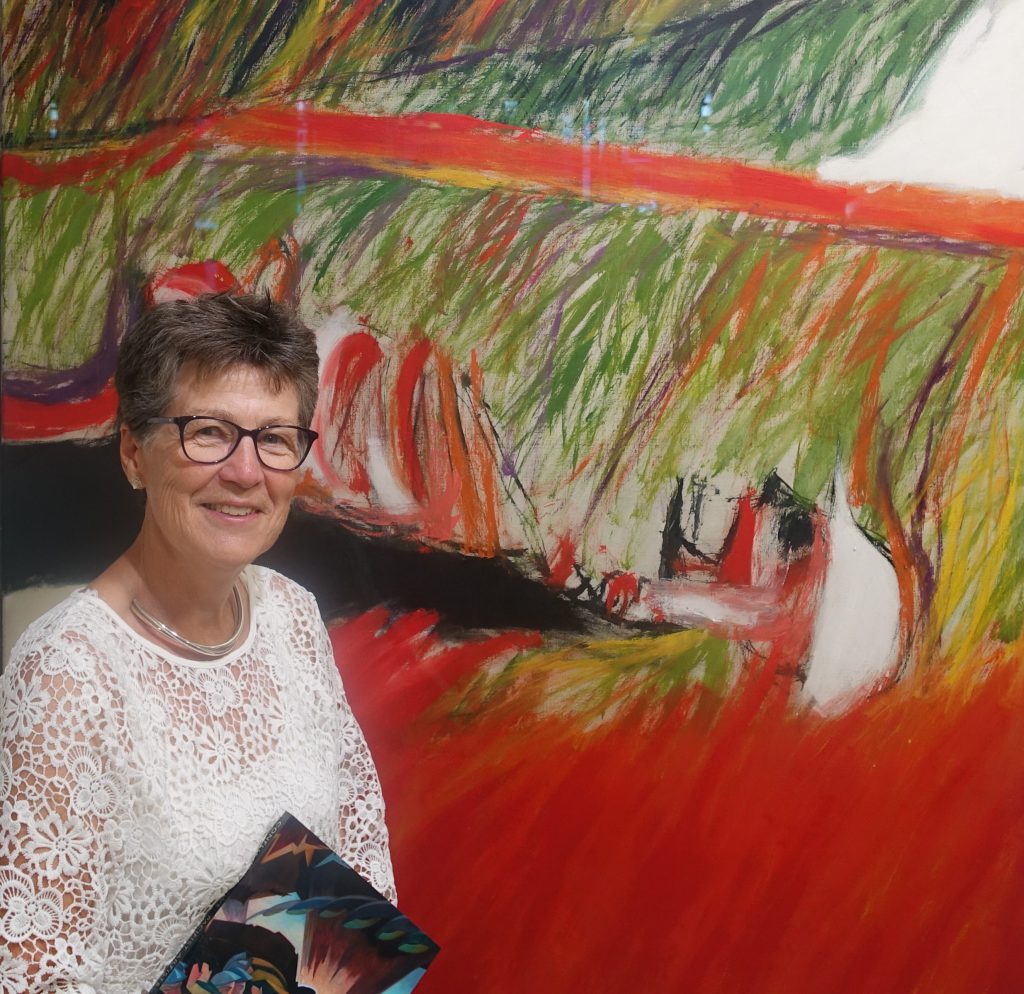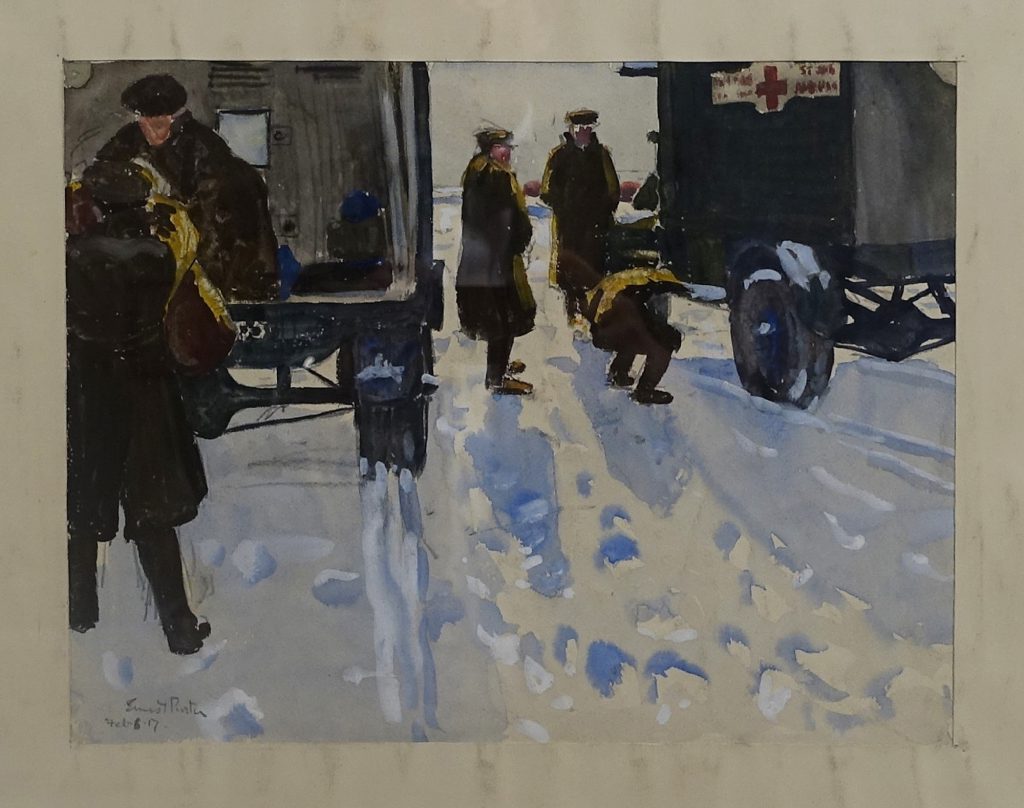
Marking the centenary of the ending of the First World War ‘Conflicting Views: Pacifist Artists’ at the Chichester University’s Bishop Otter Gallery explores the stories of artists who were conscientious objectors or pacifists through their art.
The exhibition has been curated by Dr Gill Clarke. Gill Clarke has a rare gift for narrative. A deep understanding of her subject is always distilled in a remarkably coherent and accessible way. These qualities are apparent in this latest show.
As we view the exhibition together Gill explains “The exhibition marks the centenary of the ending of the First World War. It explores the ways artists who were conscientious objectors and pacifists responded to war and conflict.”
Conscription was introduced for the first time in 1916 and again at the outbreak of the Second World War in 1939.
Each painting seeks to illustrate how individual artists experienced and interpreted war, and the ethical, religious and political grounds which informed their views and decisions to refuse to undertake compulsory military service.
Some of the artists included in the show were absolutist Conscientious Objectors and were imprisoned. Others accepted an alternative form of service.

Gill Clarke says “As a Quaker and therefore a pacifist Ernest Procter accepted an alternative form of service with the Quaker Friends Ambulance Unit.” A number of works have been leant to the show by the Religious Society of Friends (Quakers) in Britain. Amongst these is Ernest Proctors beautifully painted watercolour ‘SSA (Section Sanitaire Anglaise) at HQ Loading Up, 1917’. The Friends Ambulance Service would operate under the Red Cross. Here we see the unit loading up their motorised ambulance convoy in the light of the snow covered landscape.
Amongst the most powerful images in the exhibition are a series of works by the Scottish-Irish artist William Crozier. His imagination was haunted by the images of the Holocaust which he saw as a teenager on the Pathé newsreels as the concentration camps were liberated by Allied forces during the Second World War.
The enormity of this horror informed Crozier’s pacifist stance when in 1953 he declined to serve in Korea through National Service.
Gill says “Drawing on photographs from World War I, Bergen-Belsen and Auschwitz ‘Bourlon Wood’ portrays the blood-stained, ravaged landscape in Northern France. In the darkness at the foot of ridge lies a skeletal soldier wearing a tin hat. It is so much more than a comment on the horrors of war, it captures the metaphysical idea of death – the skull beneath the skin…”
The work in this timely and challenging exhibition demonstrated the role of artists as moral witnesses providing a series of intimate and highly personal accounts of their experience of war.
‘Conflicting Views: Pacifist Artists’ runs at Chichester University until 7th October 2018 and entry is free.
For more information about the exhibition, associated events and opening times go to www.chi.ac.uk/about-us/art-venues/otter-gallery/current-exhibitions.
By Rupert Toovey, a senior director of Toovey’s, the leading fine art auction house in West Sussex, based on the A24 at Washington. Originally published in the West Sussex Gazette.